Xiaomin Zhou
Application of Transfer Learning and Ensemble Learning in Image-level Classification for Breast Histopathology
Apr 18, 2022

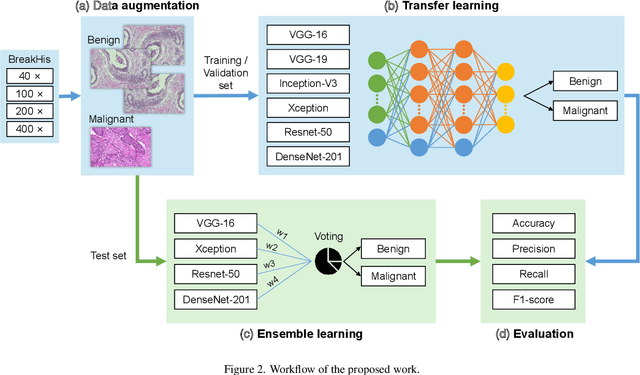
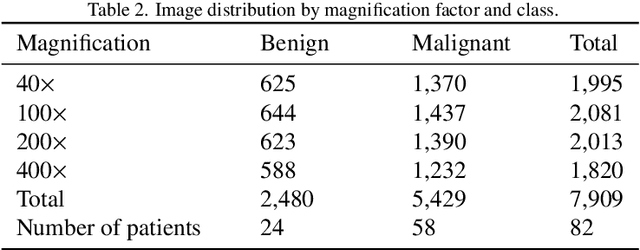
Abstract:Background: Breast cancer has the highest prevalence in women globally. The classification and diagnosis of breast cancer and its histopathological images have always been a hot spot of clinical concern. In Computer-Aided Diagnosis (CAD), traditional classification models mostly use a single network to extract features, which has significant limitations. On the other hand, many networks are trained and optimized on patient-level datasets, ignoring the application of lower-level data labels. Method: This paper proposes a deep ensemble model based on image-level labels for the binary classification of benign and malignant lesions of breast histopathological images. First, the BreakHis dataset is randomly divided into a training, validation and test set. Then, data augmentation techniques are used to balance the number of benign and malignant samples. Thirdly, considering the performance of transfer learning and the complementarity between each network, VGG-16, Xception, Resnet-50, DenseNet-201 are selected as the base classifiers. Result: In the ensemble network model with accuracy as the weight, the image-level binary classification achieves an accuracy of $98.90\%$. In order to verify the capabilities of our method, the latest Transformer and Multilayer Perception (MLP) models have been experimentally compared on the same dataset. Our model wins with a $5\%-20\%$ advantage, emphasizing the ensemble model's far-reaching significance in classification tasks. Conclusion: This research focuses on improving the model's classification performance with an ensemble algorithm. Transfer learning plays an essential role in small datasets, improving training speed and accuracy. Our model has outperformed many existing approaches in accuracy, providing a method for the field of auxiliary medical diagnosis.
A Comprehensive Review for Breast Histopathology Image Analysis Using Classical and Deep Neural Networks
Mar 27, 2020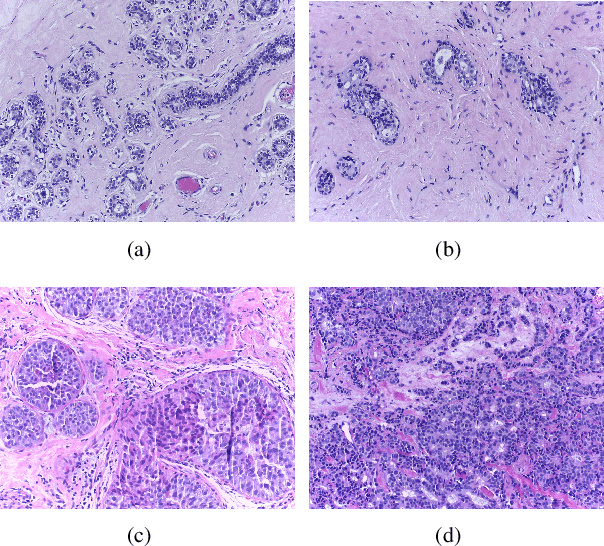
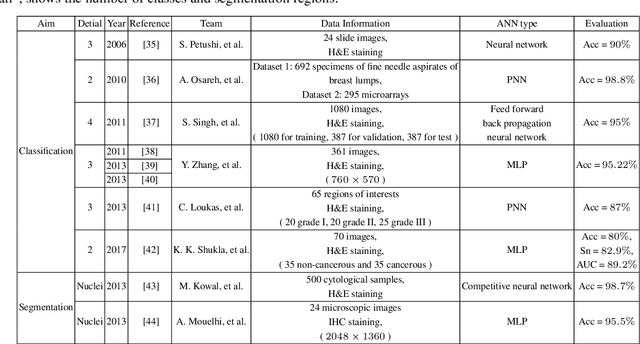
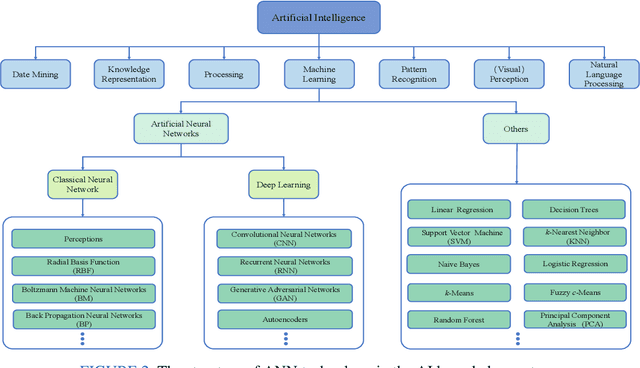
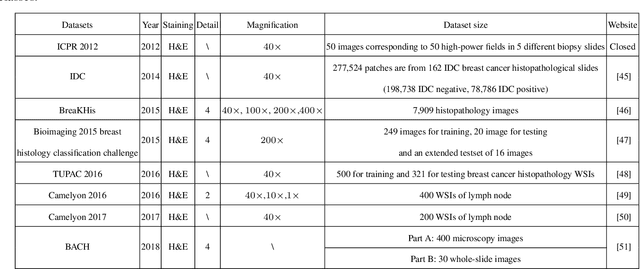
Abstract:Breast cancer is one of the most common and deadliest cancers among women. Since histopathological images contain sufficient phenotypic information, they play an indispensable role in the diagnosis and treatment of breast cancers. To improve the accuracy and objectivity of Breast Histopathological Image Analysis (BHIA), Artificial Neural Network (ANN) approaches are widely used in the segmentation and classification tasks of breast histopathological images. In this review, we present a comprehensive overview of the BHIA techniques based on ANNs. First of all, we categorize the BHIA systems into classical and deep neural networks for in-depth investigation. Then, the relevant studies based on BHIA systems are presented. After that, we analyze the existing models to discover the most suitable algorithms. Finally, publicly accessible datasets, along with their download links, are provided for the convenience of future researchers.
 Add to Chrome
Add to Chrome Add to Firefox
Add to Firefox Add to Edge
Add to Edge